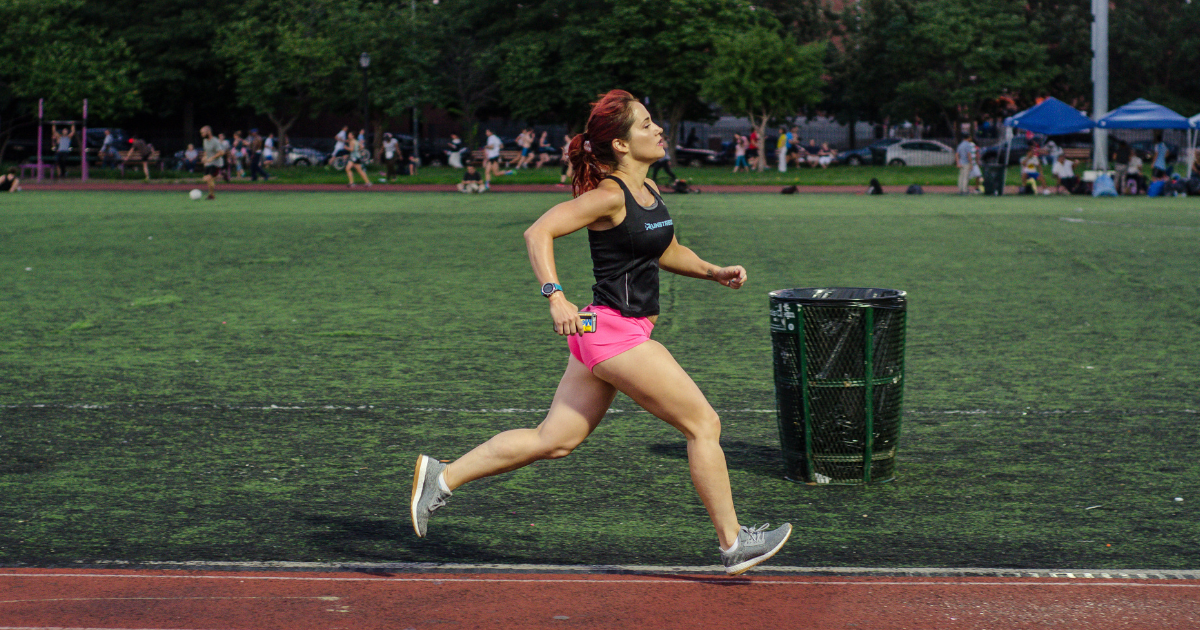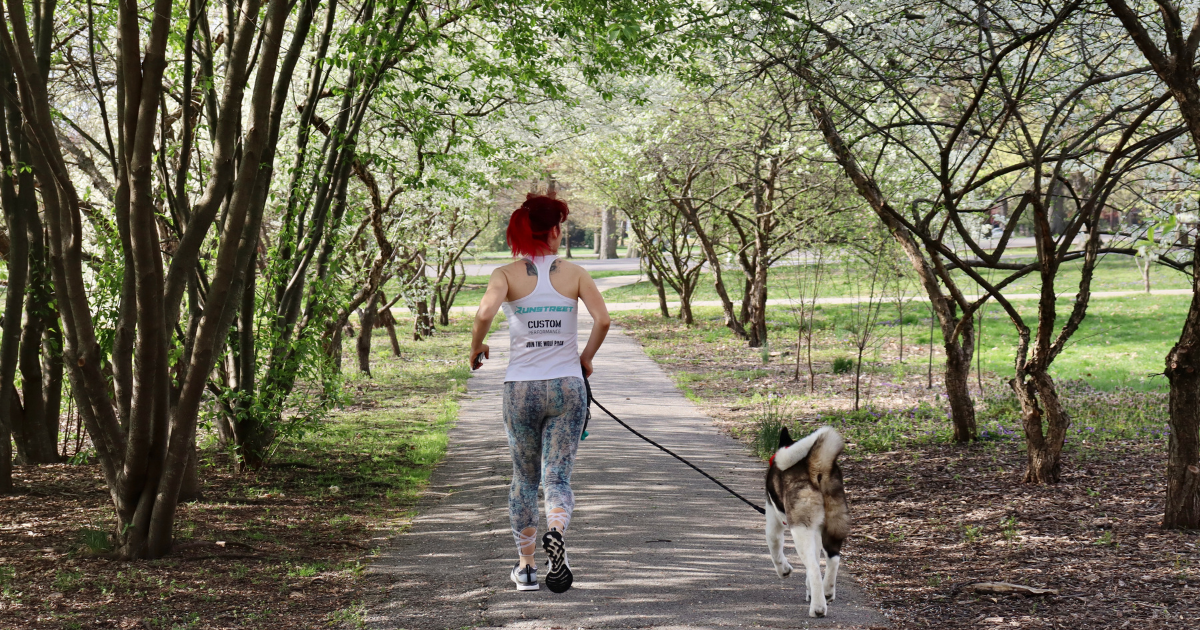A Coach’s Guide to Conquering Lower Back Pain When Running
By Marnie Kunz,
Certified run coach and trainer
Lower back pain when running can be a nuisance and even sideline you from your workouts. As the most common cause of disability in the world (according to the World Health Organization), lower back pain is a big problem for many people, including some runners that I coach. The cause of your back pain when running can be from a variety of factors, which we’ll delve into in this guide. I break down the most common cause of lower back pain in runners and offer training tips to help you combat the problem. Also, I interviewed a doctor for tips on how you can holistically deal with and reduce back pain in your life. Note that this advice is not intended to replace medical advice. If you have severe or chronic back pain, you should see a doctor or physical therapist to determine the cause and best treatment.
Causes of Lower Back Pain When Running: A Coach and Dr. Weigh In
If you’re experiencing lower back pain when running, there are some common culprits that can be causing your issue. Many of these problems can be corrected with strengthening exercises and running form drills. Below are some of the most common causes of lower back pain for runners:
Weak Core Muscles
Weak core muscles are one of the most common causes of back pain among runners. “Runners often focus on lower body strength and cardio, but a weak core can strain the back with every step,” says ”Dr. Gbolohan Okubadejo, an NYC area spinal and orthopedic surgeon. “Your core muscles — abs, obliques, and lower back — stabilize the spine and absorb impact. Adding planks and controlled leg lifts a few times a week can make a big difference. A stable core means your spine isn't doing all the work when you run.”
Solution: Add core strengthening exercises to your workout program, with at least three core workouts per week. To get started, do 2 to 3 sets of planks, side planks, dead bug exercises, and flutter kicks.
Related: 5 Best Core Workouts for Runners
Poor Running Form
Proper running form is another common cause of lower back pain when running. If you overstride (taking too big steps) or have bad posture, this can lead to tension and pain in your back.
“Poor form, like leaning too far forward or overstriding, can put pressure on your lower back,” Dr. Okubadejo says.“Check in with a physical therapist or running coach to evaluate your gait and posture. Small changes, like shortening your stride or keeping your chest lifted, can ease that pressure. It’s about running smarter, not harder.”
Solution: Consult a running coach or physical therapist for a running form analysis. Do running form drills to help improve your gait.
Change your running shoes every 300 to 500 miles.
Related: 10 Running Form Tips from a Run Coach
Worn or Poorly Fitting Shoes
Wearing improper footwear is actually one of the most common causes of injuries that I see in runners I coach. Running in the wrong shoes or worn-out running shoes can lead to back pain when running. A good rule of thumb is to change your running shoes every 300 to 500 miles (including walking and running miles), or when they feel flat on your runs.
“Worn-out shoes or the wrong type for your gait can throw off your alignment and irritate your back,” Dr. Okubadejo explains. “Get fitted by a specialist and replace shoes regularly — every 300 to 500 miles is a good rule. Also, running constantly on hard surfaces like concrete can amplify spinal stress. When possible, run on grass, trails, or tracks to reduce impact.”
Solution: Get fitted for running shoes at a running store and change your shoes regularly (every 300 to 500 miles or when they feel flat).
Related: When to Change Your Running Shoes
Overtraining
Overtraining is when you add too much mileage or intensity to your program too quickly. This can overload your muscles and joints and cause tension, pain, and injuries, breaking down your body.
Solution: Follow a running training plan designed by a certified coach so you increase your training gradually to avoid overtraining and injuries. Take at least one complete rest day a week to allow your body to recover from workouts.
Tight Hip Flexors and Hamstrings
Photo by Marques Jackson Photography.
Limited flexibility in the hip flexors and hamstrings can cause lower back pain when running by disrupting your pelvic alignment and increasing stress on your lumbar spine. Tight hip flexors, located at the front of the hips and attaching to the lumbar spine and pelvis, pull the front of the pelvis downward into an anterior tilt. This exaggerated arch in the lower back compresses spinal structures and strains supporting muscles.
Conversely, tight hamstrings, which run along the back of your thighs and connect the lower pelvis, can pull the back of the pelvis downwards into a posterior tilt. This creates a biomechanical imbalance where the opposing pulls of tight hip flexors and hamstrings force the lower back muscles to work harder to stabilize the pelvis during the repetitive impact of running.
The restricted range of motion caused by these tight muscles can alter your running gait, leading to compensatory movements and increased stress on the lower back. For instance, limited hip extension due to tight hip flexors or restricted leg swing from tight hamstrings can force the lower back to compensate for the lack of movement.
Solution: Do dynamic stretches for mobility exercises before running to help activate and loosen your hamstrings and hips. Focus on doing hip stretches and hamstring stretches with dynamic stretches (those involving continuous movement) before running and static stretches (where you hold a still position) after running. If your lower body feels tight all over or you’re exhausted from workouts, take some extra rest time to allow your body to heal.
Related: 10 Best Hip Stretches for Runners
Stress and Sleep
Stress has many harmful effects on the body, including increased muscle tension, soreness, and even pain. Getting enough sleep is also important to allow your body to recover from intense training.
“Mental stress creates physical tension, especially in the back and shoulders,” Dr. Okubadejo says. “Chronic tightness from stress can easily flare up during physical activity. Prioritize good sleep and find ways to decompress, like deep breathing or gentle stretching before bed. A calm, rested body recovers better and is less likely to hold pain.”
Solution: Build some de-stressing activities into your schedule. Go outside for leisurely walks and establish a nighttime routine to help you unplug and unwind before bed. Some light yoga stretches like child’s pose and cat-cow pose can also help ease tension in your back and relax your mind.
Muscle Imbalances
Muscle imbalances can cause irritation in your back, leading to lower back pain when running. Some common issues include weak glutes, which can occur from a sedentary lifestyle and sitting a lot. Similarly, weak or tight hamstrings can lead to lower back pain.
Solution: Doing strength training - whether with your own body weight, free weights, or resistance bands - at least twice a week can help strengthen your muscles and correct imbalances. Also, single-leg exercises such as split squats or single-leg hip thrusts are an excellent way to target both sides of your body equally, combatting imbalances that can occur between the two sides.
Muscle Strain
If you have sharp or dull pain in your back and muscle spasms, you may have a muscle strain. Muscle strains can happen from heavy lifting but can also occur when running with poor form. If your pain gets worse as you exercise, stop and see a doctor or physical therapist. The general treatment for a pulled back is to rest and use ice or heat to reduce inflammation, but it’s important to get a medical diagnosis so you know how to treat your injury.
Solution: If you suspect you have a pulled back muscle, see your doctor or physiotherapist for a diagnosis and treatment plan. Rest, ice or heat, and over-the-counter pain medicine are usually prescribed for muscle strains.
Nerve Issues
Another common cause of low back pain for runners and the general population is nerve issues. Nerve problems often stem from the compression, irritation, or inflammation of nerves in the lumbar spine or surrounding areas, leading to radiating pain, numbness, tingling, or weakness that can be exacerbated by the repetitive impact and movement of running.
Sciatica is pain that radiates along the sciatic nerve, which runs from your lower back and down the back of each leg. Sciatica is a common nerve condition that can be caused by a herniated disc, spinal stenosis, or poor running form.
Solution: See a doctor for a diagnosis and treatment if you have nerve problems related to your back. Physical therapy is often prescribed to help alleviate nerve issues.
Joint Issues
Joint-related issues can contribute to lower back pain when running. Problems with the intervertebral discs, such as bulges or herniations, can irritate surrounding nerves and cause back and joint pain that intensifies with the impact of running.
The sacroiliac joints (SI), connecting the spine to the pelvis, are particularly vulnerable to the repetitive forces and twisting motions of running, leading to inflammation and pain that can radiate into the lower back. Also, the facet joints, small joints located between the vertebrae, can become inflamed or arthritic, causing back pain that is often worsened by extension and the jarring nature of running.
Solution: See a doctor if you suspect joint issues are causing your back pain. Getting a diagnosis will allow you to get treated and heal.
Listen to Your Body
If you experience lower back pain when running, pay attention to how and when it hurts. Do you have tightness in other areas of your body? Does the pain feel sharp or dull? Does it go away with rest or stay the same? Pay attention to when the pain starts and how long it lasts.
If you have radiating pain down your leg, numbness, weakness, bowel or bladder changes, or back pain that lasts for more than 10 days, get medical attention. A medical professional can do imaging tests to determine the cause of your back pain and create a treatment plan to get you on the road to recovery.
Mental Strategies for Dealing with Back Pain
“When pain becomes chronic, it can wear people down emotionally, making them feel frustrated, helpless, or even depressed,” Dr. Okubadejo says. “The constant discomfort often interrupts sleep, which adds to irritability and fatigue. Back pain can cause people to stop doing things they enjoy, like sports or social activities, which leads to isolation. For example, a patient of mine who used to run daily stopped altogether due to back pain, and within months, he began struggling with anxiety and low mood. That’s why treating back pain isn’t just about fixing the spine—it’s also about protecting a person’s overall well-being.”
If you are experiencing chronic back pain that is interrupting your training and life, see a doctor for help. Treating your physical symptoms - often accompanied by physical therapy - can help you feel better mentally too. I know for runners I coach, being sidelined from running is a downer, but try to be gentle with yourself and keep the big picture in mind. The sooner you rest and treat your injury, the sooner you’ll be able to enjoy running again.
Running Pain-Free is Possible
If you experience lower back pain when running, it may be caused by lifestyle factors under your control - such as weak muscles you can strength train or poor running form that you can correct with coaching and running drills. Or you may need to change your running shoes. If you have a joint, muscle, or nerve injury or pain that does not go away with rest, seek medical help for a diagnosis and treatment. By paying attention to your symptoms, resting, training smart with a training plan, and seeing a doctor when necessary, you’ll be able to enjoy pain-free runs again.
For more running training tips, workouts, and a dose of weekly cheer, sign up for our free Wellness Wednesday newsletter and follow Runstreet on Instagram. Happy - and healthy - running to you!
Related Articles: How to Prevent Sore Legs After Running, 10 Tips for Better Muscle Recovery, Insider’s Guide to Fitness Over 40
Marnie Kunz is a NASM-certified personal trainer and USATF- and RRCA-certified running coach based in Brooklyn, NY. Marnie likes helping people get and stay active to enjoy a better quality of life. When she’s not doing fitness things, Marnie enjoys exploring with her dog, a mischievous rescue Akita.






